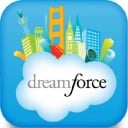What is Dreamforce?
 We’ve never been to Dreamforce before. Last week was our first trip. If you’ve never been you’re probably wondering – what is Dreamforce? Here’s the answer, Dreamforce is what you want it to be. Surely everyone attending the event had different agendas. For us, it was all about soaking up the environment and seeing what’s new in the world of SaaS software. Dreamforce was an excellent opportunity to network and stay current on new technology and SaaS offerings. Below you’ll find a few highlights from our Dreamforce 2011 experience along with lessons learned.
We’ve never been to Dreamforce before. Last week was our first trip. If you’ve never been you’re probably wondering – what is Dreamforce? Here’s the answer, Dreamforce is what you want it to be. Surely everyone attending the event had different agendas. For us, it was all about soaking up the environment and seeing what’s new in the world of SaaS software. Dreamforce was an excellent opportunity to network and stay current on new technology and SaaS offerings. Below you’ll find a few highlights from our Dreamforce 2011 experience along with lessons learned.
Highlights from Dreamforce 2011
1. What is Dreamforce without marketing automation? – there was lots of it. Eloqua, Silverpop and Marketo had the biggest booths (or should we say “spent the most money”). Rumor has it Eloqua and Marketo dropped close to $1M each for the event. Eloqua and Marketo seem to be in competition to be bought by Salesforce.com. We predict some kind of acquisition will happen within the next 12 months. Heck, we even saw banners showing Salesforce’s SaaS “software stack” with a placeholder there for “Marketing Automation”. Marketo might be the best choice for Salesforce.com as Eloqua has just filed to go public, making it a bit more difficult to acquire. Hubspot is also a possibility especially since Salesforce.com invested millions into them back in March 2011.
2. Most vendors in the Marketing Automation space price their solution with a floor of $12K.
3. There are many more social media monitoring (listening and engaging) solutions available in the marketplace than we expected. It’s a very competitive space. It was interesting to hear about CoTweet, acquired by ExactTarget in March 2010. A basic version of CoTweet is free. ExactTarget is trying to integrate their platform as much as possible and create an “App Store” around their platform.
4. Will B2B marketers get confused with the emergence of “App Stores” like the one from ExactTarget? These seem to be in direct conflict with Salesforce.com’s AppExchange.
5. Vendors that didn’t show a live demo of their solution (only a PowerPoint or video) didn’t show very well.
6. There was a big splash about Data.com. Its clear data.com wants to be the “App Store” for data. It’s got a lot of potential but the lack of available content left lots to the imagination.
7. Form auto-completion and simplification seem to be a new exciting thing. For example, Reachforce and Demandbase both have solutions which require visitors only enter their name, email and company. While the visitor is typing in the company name values automatically display below the field suggesting the visitor’s company and location. Once the user selects their company and location from the drop down additional data such as location, industry, revenue and other business parameters are appended to the form entry and fed into a lead management system.
8. RingCentral had a nice system to automatically bring up a lead or contact in Salesforce.com when a user receives a phone call from a respective lead/contact. We want one!
Lessons Learned from Dreamforce 2011
1. Wear tennis shoes or comfortable walking shoes.
2. Get a copy of the “Cloud Expo Guide” and circle the booths you want to visit.
3. Arrange to meet with customers and partners before Dreamforce starts.
4. The Expo floor closed rather early – 3:45PM on some days. Choose the 2nd or 3rd day to walk the show floor. You’ll get about eight straight hours.
What is Dreamforce to you? What did you learn from Dreamforce 2011? Please feel free to share your experiences.
To be alerted of future posts, please click on the RSS button.


